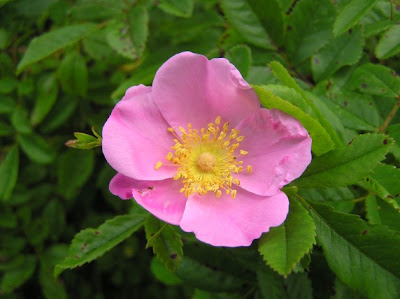
The real excitement was over Atlantic Puffins.

They're not very aerodynamic. They're almost like a penguin, with bodies built more for swimming than flying. That colorful bill is only sported during the breeding season.

This next bird is a Laughing Gull. The black hood and red bill makes them distinctive, and much more showy than the prevalent Herring Gull.

And I saw Northern Gannett for the first time. Some of them were diving after fish, folding their wings back and plunging into the water like a dart.

We spotted Atlantic White-sided Dolphins. I'd never seen that mammal before.

There were Greater Shearwater in abundance, many floating on the ocean near where we stopped to observe the dolphins.

I enjoyed seeing the Wilson's Storm-petrel. They flit about just over the surface of the water.

Here's another. I'd get excited when I saw these birds and proclaim, "There's one!" to Cyndi, much to the irritation of the whale watchers who would always turn to see a whale and be disappointed, again.

When there's a whale, it's hard to miss. When it is a pair of Humpback Whales, they're awesome. "Thar she blows!"

Whale tails become encrusted with barnacles and scarred by encounters with Killer Whales, so every whale has a unique tail, much as people have unique fingerprints. The tail can be used for identification. The biologist on board the tour said these two were Gemini and Triton, and Gemini was first seen in 1976, and Triton in 1981.

There they go, back to the deep to feed in the cold upwelling nutrient-rich waters of the Gulf of Maine. Click on a tail to get a closer look at the scars, bite marks, and barnacles.

We watched them for about a half-hour. They often slapped their tails forcefully against the water, and the biologist said that is presumed to be a way to communicate over great distances, and may assist in knocking some of the barnacles off. I thought they were just "marking their territory" since there was a big boat stopped next to them. Maybe it is a warning, like, "Could be whalers." It was certainly a joy to watch, and the tour ran overtime ... to our delight.



























































